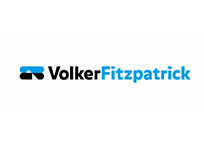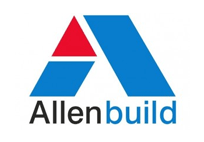Call us free on 0808 168 9540
Call us free on 0808 168 9540

Japanese Knotweed is the most invasive species in Britain and can have costly legal implications for those who have Knotweed on their commercial or residential property.
Japanese knotweed is an introduced and highly invasive plant that comprises a deep and extensive perennial rhizome/root system and dense thickets of aboveground stems that grow rapidly in the spring and die back each winter.
Historically, Japanese knotweed has had many common names. Some of these are as follows: Hancock’s curse; German sausage; pea-shooter plant; donkey rhubarb; gypsy rhubarb; Sally rhubarb; elephant-ear bamboo; Japanese bamboo; Japanese fleece flower; Mexican bamboo; wild rhubarb; parkside; Asiatic knotweed; hu zhang (in China); and itadori (in Japan).
Japanese knotweed originally comes from Japan and parts of eastern China, Korea and Taiwan.

Japanese knotweed is widespread in the UK. It favours disturbed sites of marginal land and disused urban spaces. It can also be prevalent along old railway lines and waterways.
Japanese knotweed was first introduced to Kew Gardens in the mid-1800s by a Bavarian physician called Philipp von Seibold, who was a physician with a side-interest in botany. On returning to Europe from working in Japan, he established an exotic plants nursery in Belgium, where he sold Japanese knotweed at extortionate prices to Victorian gardeners in Britain.

Japanese knotweed is an invasive plant that can spread aggressively outside its natural range in east Asia. It was introduced to the UK in the 1800s and has spread across the country causing damage to built structures and wild habitats.
Japanese knotweed exhibits vigorous growth through the soil from a fibrous rhizome (creeping root system) that can cause damage to areas of hard standing, foundations, drains, services, walls and other built structures by growing through cracks and openings between them. Soil can be contaminated with reproductive knotweed material up to a depth of 3m and a radius of over 7m.
The Environment Agency recommends the removal and/or treatment of all soil within these extents.
If it is not dealt with before a site is redeveloped, or if groundworks take place for another reason, Japanese knotweed contaminated material can very easily be spread across or off a site, resulting in new areas of knotweed growth and, potentially, criminal prosecution or litigation from third parties. This is because from only a small amount (less than a centimetre) of knotweed root (rhizome), regeneration can occur forming a new, viable plant.
Like many foreign plants, Japanese knotweed was seen by Victorian gardeners as an unusual and attractive addition to parks and large gardens. Initially, it’s hardiness and ease of establishment were seen as benefits.
Japanese knotweed is widespread and common in the UK. However, it is getting less obvious in urban areas as people take steps to control it. On land where there is little management, it tends to be more obvious as large stands that can be scattered over wide areas.
In its native range in Japan knotweed can still be seen as a pest because it can rapidly spread to form dense thickets where it is not wanted and it remains difficult to control.
Japanese knotweed forms dense thickets of bamboo-like stems that can grow 3m tall. Its thick stems are green with mottled red spots. Its leaves are shield-shaped, with flattened bases. It produces spikes of small white flowers very late in the growing season, around September.
If allowed to accumulate and grow over many years, the roots and rhizomes of Japanese knotweed can grow through gaps in built structures and floors, prising them apart and causing damage as the rhizomes expand and develop into large crowns. Damage can also be caused to drains and sewers as Japanese knotweed rhizomes can grow many metres through them looking for gaps and cracks to grow out of.
Japanese knotweed is not poisonous or otherwise harmful to humans. In fact, many parts of the plants can be eaten or have been used in traditional or alternative therapies and medicines. The only real risk of harm likely to be caused by Japanese knotweed is if its accumulated growth causes a heavily built structure like a wall to fall over.
Japanese knotweed has been used for centuries in some societies as a herbal medicine. While many of the health claims from ingesting or applying Japanese knotweed remedies are scientifically unproven, the plants do contain high concentrations of the antioxidant resveratrol, which is also found in red grapes.
Japanese knotweed has also been used as a cooking ingredient, finding its way into many recipes in its native range. The flavour is similar to rhubarb, and thus it makes tasty pies, drinks and chutneys.
It is not illegal to have Japanese knotweed growing on your property. However, in the UK there are laws that make it a criminal offence to plant Japanese knotweed or to cause it to grow in the wild.
There are also numerous precedents in civil law that enable those affected by Japanese knotweed to take legal action to recover costs and damages from those who were responsible for causing the knotweed to spread.
In the UK, Japanese knotweed almost exclusively grows vegetatively from small fragments of its underground shoots (rhizomes) or, less readily, from pieces of stem. It almost never grows from seed.
However, in other parts of Europe and North America, seedlings are more prevalent. New stems emerge from the ground in early spring, either from large buds on the crowns or from small buds that develop underground on the rhizomes.
The curled red leaves and shoots quickly unfurl and develop by early summer into thickets of tall canes with dense foliage. Flowers appear late in the summer, providing an important source of nectar for pollinators.
The leaves and stems die back in winter, ending the annual cycle of growth.
If you find Japanese knotweed on your land then you should talk to a professional to help you understand how it might affect you and what the costs might be to effectively treat it.
Japanese knotweed leaves have long been used as fodder for livestock, with horses reportedly being particularly partial to it. More recently, goats have been used to graze Japanese knotweed infestations in order to manage them.
This won’t kill the knotweed, but it will stop it from growing out of control.
Although there are no reports of it causing harm to animals, Japanese knotweed contains high concentrations of oxalate (as does rhubarb and spinach), which can upset the digestion of livestock.
Many people have attempted to remove Japanese knotweed themselves, with varying degrees of success. However, if land that might require mortgage finance is affected by knotweed, it will usually require the assurances and guarantees that are only available from professional treatment.
It is not easy to get rid of Japanese knotweed. Its roots and rhizomes can grow very deep into the ground and spread several metres laterally beyond the stems. This presents an iceberg analogy of there sometimes being a much larger amount of biomass below ground compared to the visible stems above ground.
This means that herbicides applied to the leaves often don’t reach the roots, making herbicide control difficult and potentially taking many years. Another method to get rid of Japanese knotweed is to completely dig it out. However, owing to the often large size and extent of the rhizomes, this can require great effort and result in large volumes of infested soil, which can be very expensive to dispose of.
If you are looking to identify Japanese knotweed, we have a range of resources as well as a dedicated identification service that can help; if you prefer, send us a picture for your free assessment. We also have a detailed guide to plants that look like Japanese knotweed for those take are most often mistaken for knotweed.
If you have received confirmation that you have Japanese knotweed, we offer a Japanese knotweed surveys for domestic and commercial premises.
If you think that you have Japanese Knotweed on your property or construction site, get in touch with our team of experts for your FREE consultation.









Dr Paul Beckett is one of the UK’s leading experts in Japanese knotweed and is a member of the Expert Witness Institute. He regularly provides Japanese knotweed expert witness services. He helped produce the RICS knotweed guidance for surveyors and was integral in the formation of the Property Care Association (PCA) Invasive Weed Control Group (IWCG).










